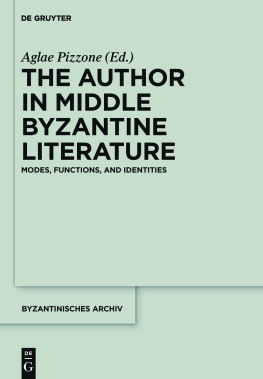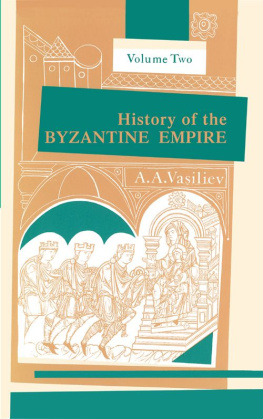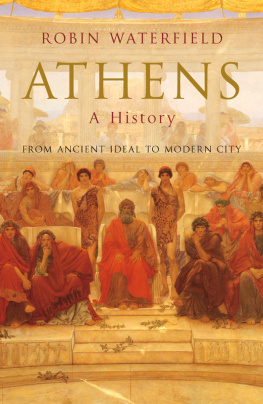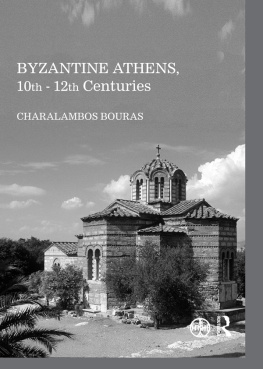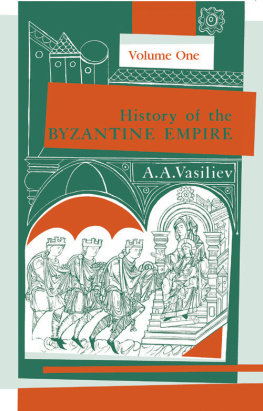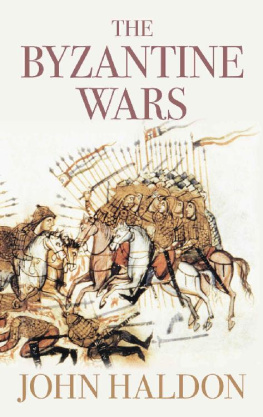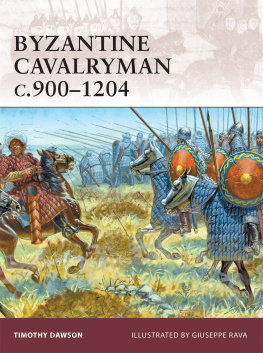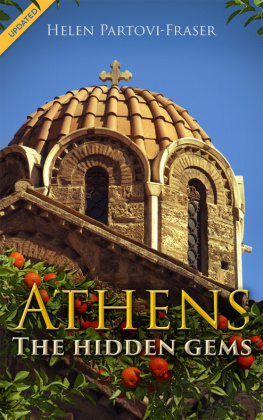First published in English 2017
by Routledge
2 Park Square, Milton Park, Abingdon, Oxon OX14 4RN
and by Routledge
711 Third Avenue, New York, NY 10017
Routledge is an imprint of the Taylor & Francis Group, an Informa business
2010 Charalambos Bouras.
The right of Charalambos Bouras to be identified as author of this work has been asserted by him in accordance with sections 77 and 78 of the Copyright, Designs and Patents Act 1988.
All rights reserved. No part of this book may be reprinted or reproduced or utilised in any form or by any electronic, mechanical, or other means, now known or hereafter invented, including photocopying and recording, or in any information storage or retrieval system, without permission in writing from the publishers.
Trademark notice: Product or corporate names may be trademarks or registered trademarks, and are used only for identification and explanation without intent to infringe.
British Library Cataloguing-in-Publication Data
A catalogue record for this book is available from the British Library
Library of Congress Cataloging-in-Publication Data
A catalog record for this title has been requested
Originally published in Greek in 2010 as 1012 . by the Benaki Museum (Mouseio Benaki, 6th Supplement, Athens) 2010 Benaki Museum. Translation of this English-language edition, which includes revisions and new material: Elizabeth Key Fowden. Proof reading: Klimis Aslanidis, Maria Diamandi and Christina Pinatsi.
ISBN: 978-1-47-247990-7 (hbk)
Typeset in Perpetua
by Apex CoVantage, LLC

Athens, one of the most celebrated cities of the ancient world, renowned for its unsurpassed cultural standards in art, architecture, writing, learning and philosophy, as well as for being the birthplace of democracy, retains its ancient reputation, despite periods of decline that have repeatedly threatened its survival, occasionally bringing it to the very brink. The history of Athens, through the two and a half millennia of its existence, oscillating from the peaks of glory to the depths of its declines, has left a checkered record of its past. Books on Athens are numerous, especially those dealing with antiquity, as well as those dealing with the modern era. The history of the intervening centuries of Athens, especially between the eighth and the nineteenth centuries, is far more opaque. It has left fewer written records, while its shrunken urban fabric has preserved a far smaller number of buildings, physically miniscule compared to the grand monuments of antiquity and those of the modern era whose architecture was often inspired by the citys glorified ancient heritage. Books on Athens associated with the Byzantine Empire, the Frankish rule, the occupation of the Catalans and under the Ottoman Empire, relatively speaking, are very few.
Outstanding among the books on Athens between pagan antiquity and the post-Byzantine era is the book by Charalambos Bouras, Byzantine Athens, 10th12th Centuries , first published in Greek (Athens, 2010), whose updated English edition is presented here. Despite the paucity of historical accounts, with their frequently questionable assessments of the city they were describing, but making full use of the results of modern archaeology, Charalambos Bouras has reconstructed a remarkably vivid image of Athens, especially during the centuries of the Middle Byzantine Empire. Conceptually comparable to the book on Rome, the other great city of pagan antiquity, written by Richard Krautheimer, under the title Rome: Profile of a City, 3121308 (Princeton, 1980), Athens emerges from its own dark age era as a shrunken and depressed medieval city is magisterially presented in a new light, which past critics had either failed to recognize, or intentionally denied that such bright moments in its history actually ever existed between the peaks of its ancient glory and its pre-modern rebirth.
Bourass Athens, much like Krautheimers Rome, following a third-century crisis and Constantine the Greats acceptance of Christianity as a new state religion in 313, was confronted with considerable pagan resistance in its midst. Additionally battered by barbarian invasions from the third through the fourth century, Athens experienced gradual Christianization in the fifth and sixth centuries, but underwent its own dark age decline during the eighth and ninth centuries. This was followed by three centuries of medieval recovery, from the mid-tenth century to the Frankish occupation in 1204, a period that effectively frames the essence of Bourass Byzantine Athens .
Confronted with a twentieth-century growth and explosion of archaeological excavations, albeit predominantly driven by desire to retrieve as much information as possible about the ancient city, their results increasingly in the course of time began to take notice of the intervening strata of the city during more than a millennium-long life as a peripheral town of the Byzantine Empire. Though numerous and carefully recorded, archaeological reports predominantly refrained from broader analyses and generally contributed very little to the comprehensive understanding of the Byzantine city. Pointing to the synthetic analysis of topography and architecture of medieval Athens by John Travlos in Chapter 8 of his book, (Athens 1960), Bouras singled out Travloss contribution as the first of its kind, outlining foundations for the understanding of previously unknown Middle Byzantine Athens.
Bourass book, published fifty years later, is a result of carefully gathered and researched material, primarily based on extensive archaeological excavations induced by a variety of factors affecting the growth of the modern city. Among these stand out excavations for the Metro construction, that yielded especially valuable insights into the history of the city from its origins to the present. Other invaluable archaeological information was produced by large-scale excavations in areas, such as those within the ancient Agora, providing insights of special importance for the understanding of the city in antiquity, but also in areas where urban changes over time retained specific significant links to the main roads and streets over long periods of time. Important elements of continuity of urban fabric through centuries, in other respects, reveal discontinuities brought about by different patterns of urban life revealing the making of Middle Byzantine Athens.
In addition to the enduring matrix of the principal roads, features such as the city walls with strategically placed strong city gates defined aspects of the city in differing terms over time. Parts of the three lines of city walls have been partially preserved and recorded. The longest and the oldest of these the so-called Themistoklean Wall may have survived (in part at least) possibly until the Latin conquest of the city in 1204, but its practical use may have been minimal from it origins on account of its length that could not be effectively manned. Much shorter in length was the hastily constructed Late Roman, so-called Post-Herulian wall, built shortly after the devastating Herulian raid of A.D. 267, that fortified the area known as Plaka, on the north side below the Acropolis of Athens. Subsequently, it was extended by another stretch, along the southern flank below the Acropolis, known as Rizokastro.
The shortest, but by far the strongest, fortified section of the city walls enveloped the majestic Acropolis, rising atop a huge rocky formation that dominated the city in antiquity, as it still does today. The Acropolis is renowned predominantly on account of the Temple of Athena Parthenos, one of the most famous architectural monuments in the world, which was neither the sole reason for its origin, nor for its various other functions throughout its history. It goes without saying that the Parthenon shared the fate of the city of Athens throughout its history, as the eternal symbol of its glory and tragedy. From its origins tied to the city, the Acropolis, as was the case in many similar ancient cities, was intended to provide a secure shelter for the city inhabitants in times of crises. The Athenian Acropolis, on the other hand, being located in the very heart of the ancient settlement, was also the most important center of the citys religious life, focused on the temple dedicated to its chief protectress the goddess Athena Parthenos. Throughout its long history, the Acropolis witnessed scores of different responses in blending military, religious, and secular functions. Severely damaged at different moments of its history by fires, explosions, plundering and physical defacement, during the last century and a half the Acropolis has become a historical monument par excellence, undergoing a series of restoration undertakings whose conceptual aim has essentially been its return to its original state, substantially from the fifth century B.C. The very process of this general goal has yielded many mistakes in judgment, in technical matters and so forth, but, especially during the last decades of the twentieth century until the present, it has become one of the most impressive achievements in the history of architectural restoration that, in its own right, constitutes a major historical landmark.


